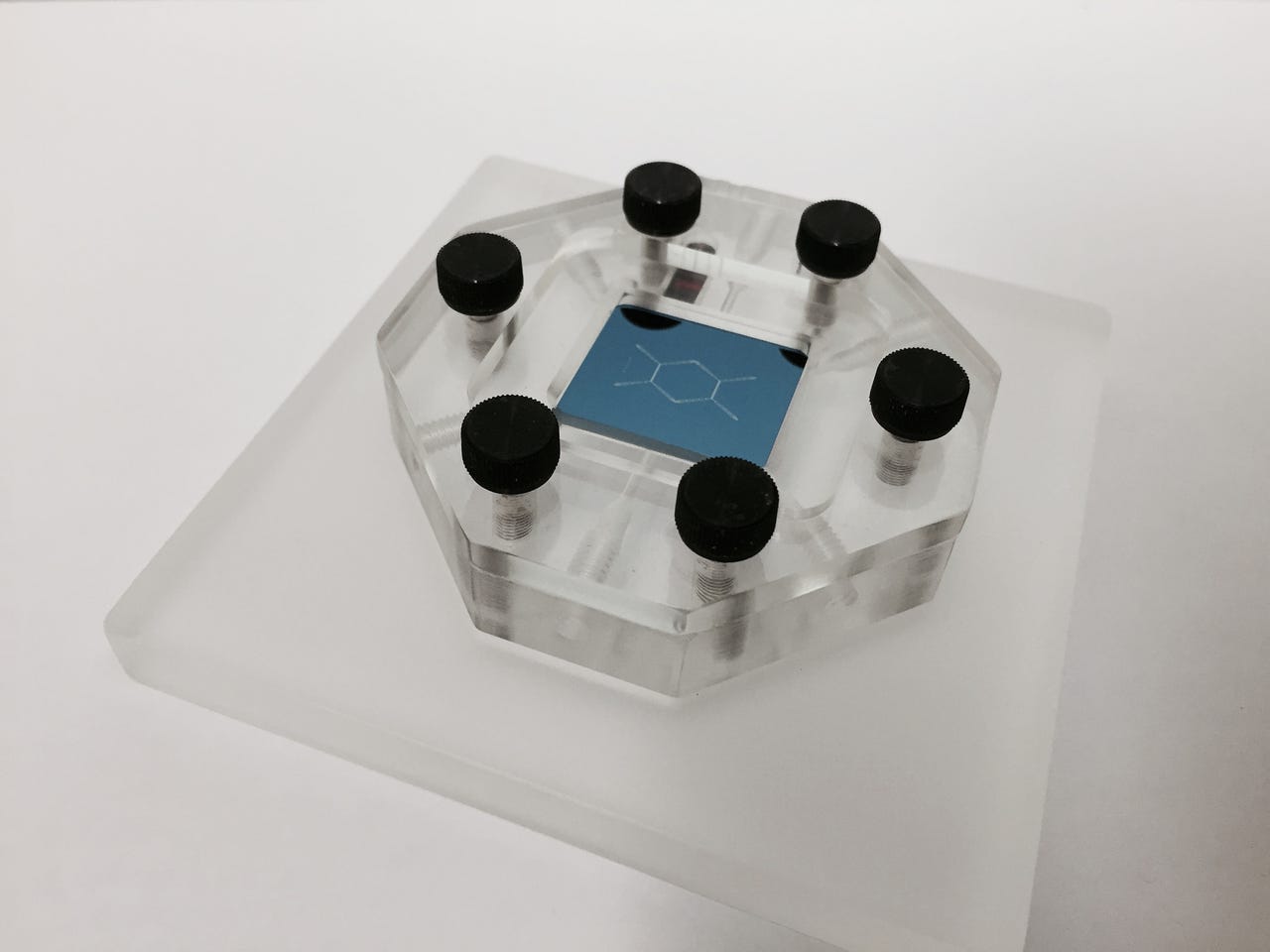IBM's 'lab-on-a-chip' is the latest weapon in the fight against disease


IBM's nanoDLD chip mounted in a microfluidic jig.
IBM, in collaboration with the Icahn School of Medicine at Mount Sinai, has developed 'lab-on-a-chip' technology that will be used to test for prostate cancer.
According to the journal Nature Nanotechnology, the IBM team's results show size-based separation of bioparticles down to 20 nanometers in diameter. At this scale, scientists can access and separate particles such as DNA, viruses, and exosomes.
Once separated, the particles can be analyzed by physicians to potentially reveal signs of disease "even before patients experience any physical symptoms and when the outcome from treatment is most positive", IBM said.
Until now, the smallest bioparticle that could be separated by size using on-chip technologies was about 50 or more times larger.
The two teams say that they will continue development of the lab-on-a-chip technology and, to begin with, they plan to test for one of the most common cancers, cancer of the prostate.
What the scientists are trying to do is a form of eavesdropping on cells. This new ability to sort bioparticles at the nanoscale can allow the scientists to 'hear' the messages carried by exosomes for cell-to-cell communications. This can make clear important questions about the biology of diseases and, "pave the way for noninvasive and eventually affordable point-of-care diagnostic tools", the scientists say. "Monitoring the intercellular conversation more regularly could allow medical experts to track an individual's state of health or progression of a disease."
Shown here is a sample being separated into nanoscale particles.
Lab-on-a-chip technologies are becoming a better way for doctors and research scientists to build more helpful tools which are faster, portable, and easier to use and require less of a sample to help detect diseases. The goal, IBM and the Mount Sinai scientists say, is to shrink down to a single silicon chip "all of the processes necessary to analyze a disease that would normally be carried out in a full-scale biochemistry lab".
The nanoscale, on-chip technology, called nanoscale deterministic lateral displacement or nano-DLD, has been developed by scientists led by IBM's Joshua Smith and Benjamin Wunsch.
It works by allowing a liquid sample to be passed, in continuous flow, through a silicon chip containing an asymmetric pillar array. "This array allows the system to sort a microscopic waterfall of nanoparticles, separating particles by size down to tens of nanometers resolution," IBM said.
The nanoDLD pillar array.
IBM says it has already scaled down the chip size to 2cm by 2cm while continuing development to increase the technology density.
It is analogous to "a road through a small tunnel that allows smaller cars to pass while forcing bigger trucks to detour around", IBM said.
A nano-DLD uses a set of pillars to deflect larger particles while allowing smaller particles to flow through the gaps of the pillar array unabated. This effectively separates particle 'traffic' by size while not disrupting flow.
IBM said that nano-DLD arrays can also split a mixture of different particle sizes into a spread of streams, "much like a prism splits white light into different colors".
The continuous flow of this technology contrasts with "the stop-and-go batch processing" that is found in conventional separation techniques, IBM added.
Further reading
- AI, MD: How artificial intelligence is changing the way illness is diagnosed and treated
- Apple CareKit: Building the future of healthcare, one iOS app at a time
- Rebuilding the brain: Using AI, electrodes, and machine learning to bridge gaps in the human nervous system
- Philips debuts new devices to help you to take control of your health (CNET)
- IBM Watson ups the ante on digital wellness with gene-based health app (TechRepublic)